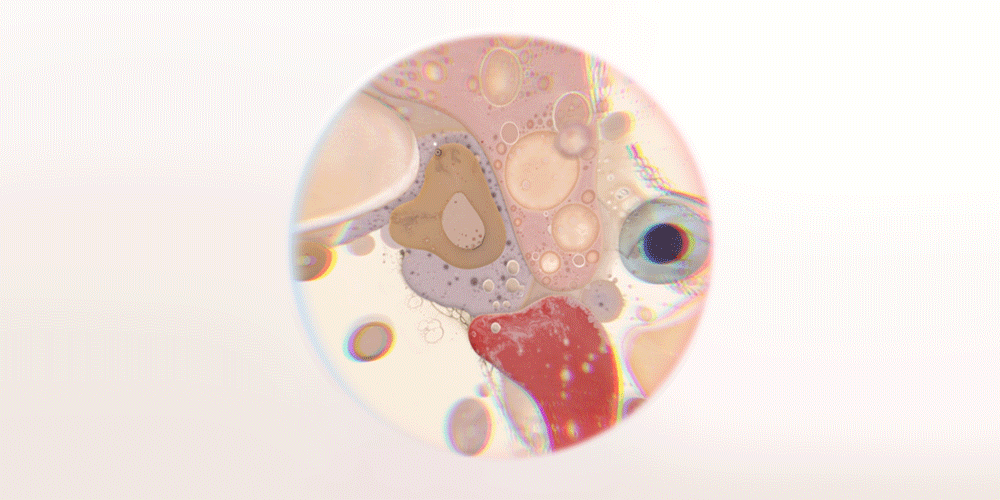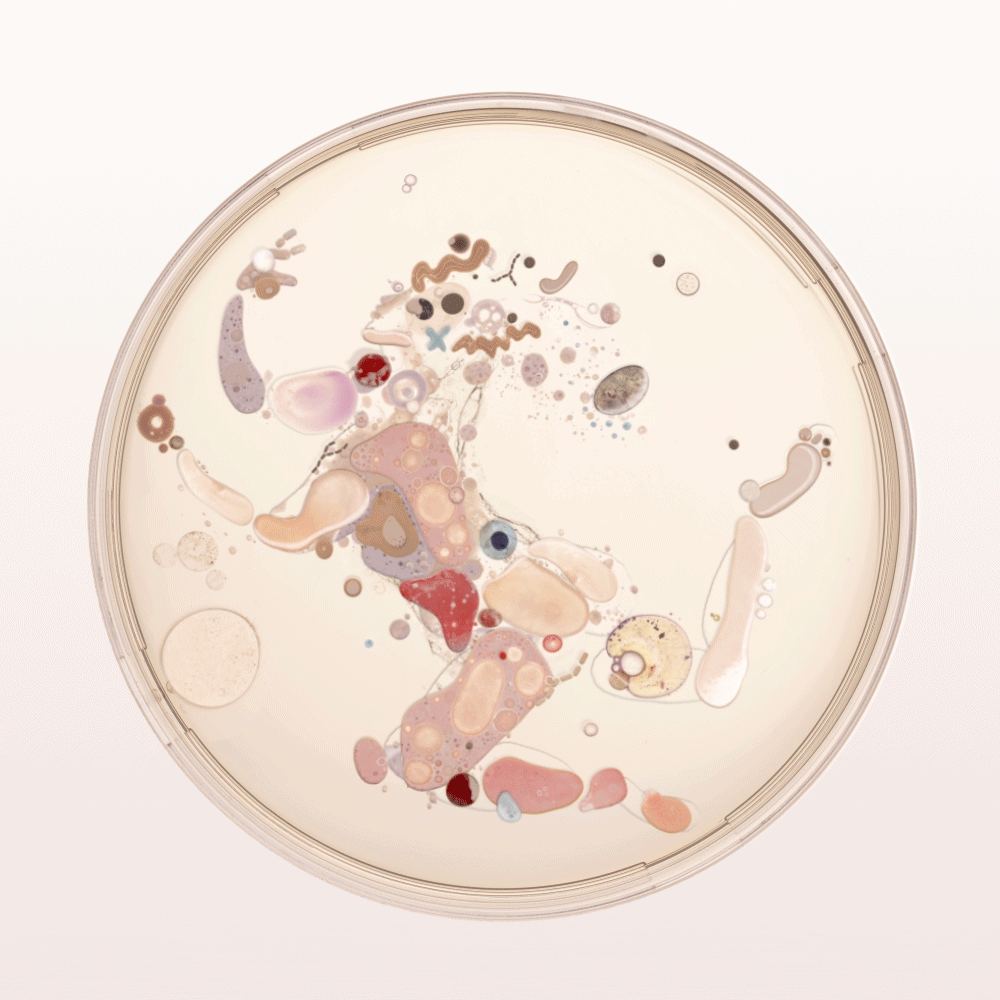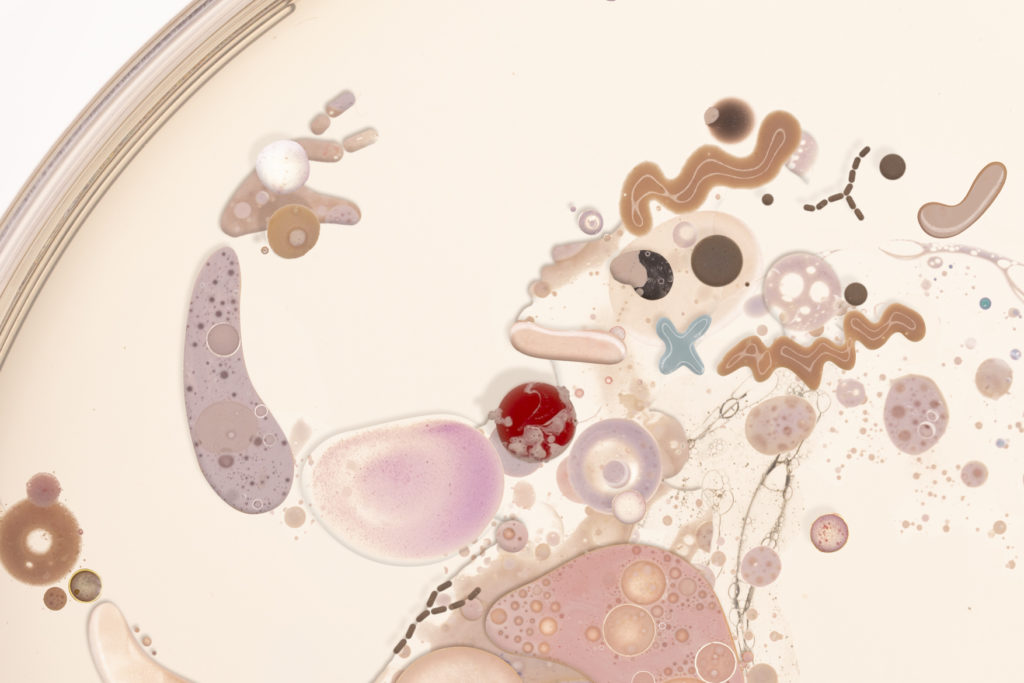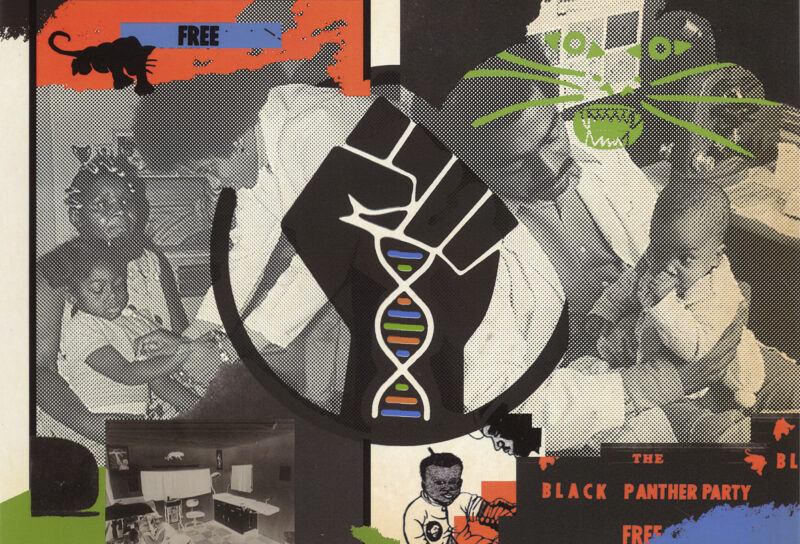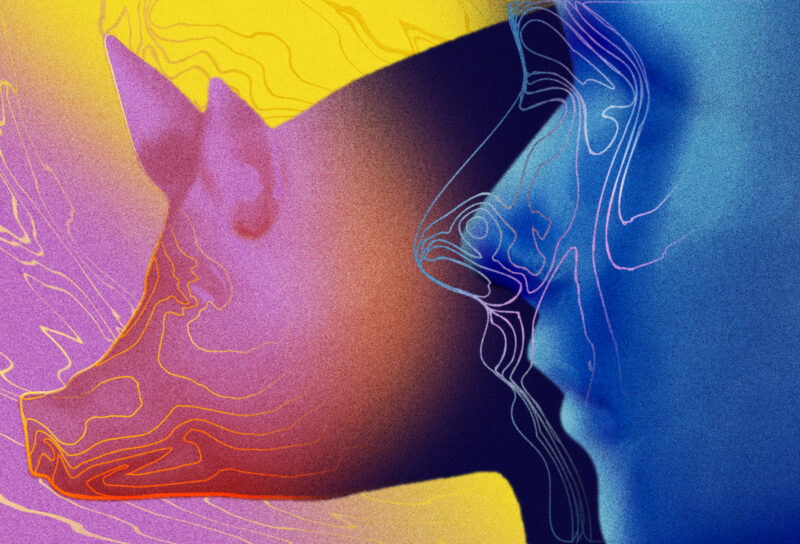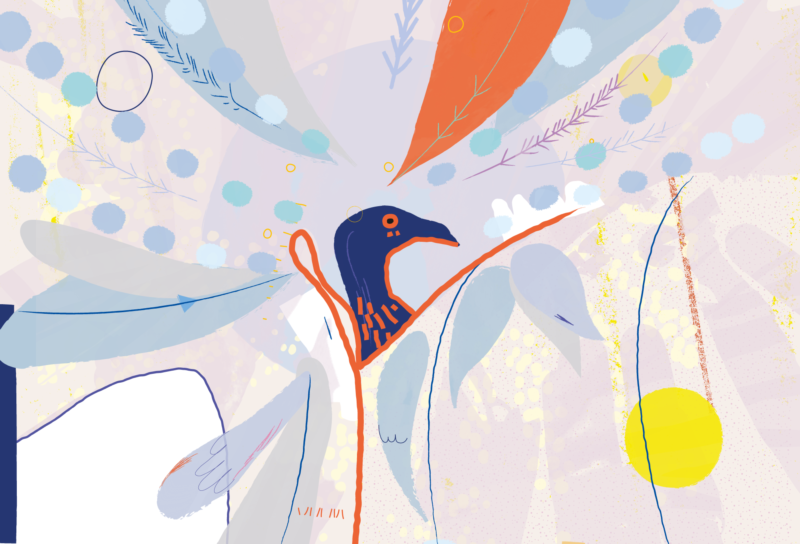“Only on condition of a radical widening of definitions will it be possible for art and activities related to art to provide evidence that art is now the only evolutionary-revolutionary power. Only art is capable of dismantling the repressive effects of a senile social system that continues to totter along the deathline: to dismantle in order to build ‘A SOCIAL ORGANISM AS A WORK OF ART’… EVERY HUMAN BEING IS AN ARTIST who — from his state of freedom — the position of freedom that he experiences at first-hand — learns to determine the other positions of the TOTAL ART WORK OF THE FUTURE SOCIAL ORDER.” —Joseph Beuys
BioArtist Steve Kurtz woke up one morning to find that his wife and creative partner of almost three decades, Hope Kurtz, was no longer breathing. The nightmare only escalated from there. By noon, the SUNY professor found himself explaining his studio practice to the Buffalo police. By the next day, he was a suspected bio-terrorist.
The BPD detectives who had entered the Kurtz residence that morning of May 11, 2004 took interest in more than the unexpected death of Hope Kurtz. Among the detritus of an otherwise normal American household, they “observed an apparent biological laboratory… including bacterial cultures growing in petri dishes labeled with letters and numbers.” They saw an apparent “bio-dispersion device….which could be used to disperse bacteria.” They saw printed media artifacts critical of the American government and others “related to bioterrorism.” They saw an announcement postcard for the Kurtzs’ upcoming art exhibition, designed by Lebanese artist Walid Raad, inscribed with Arabic writing. Having seen enough, they called the feds. By May 12, Steve Kurtz had been detained, and the government was taking its most active interest yet in the intersection of art and science. Artists became suspects, and FBI agents, against their natural skillset, were forced to conduct artist interviews.
“[The FBI] didn’t seem to get it,” said SUNY Buffalo art chair Adele Henderson, who had to remind the government that she was running an art school and not a federally funded science department. The agents wanted to know about her employee Steve Kurtz’s research methods. (Why had the Kurtzs been researching germ warfare? Did the couple hold anti-American sentiments? Why else would they propose secretly releasing mutated flies into restaurants?) Henderson had little to offer in response beyond art for art’s sake. The Joint Terrorism Task Force didn’t seem to care that the Kurtzs were esteemed artists and that their decade-long practice involved teaching science to a public audience. No one could explain to their satisfaction why the couple was conducting biological experiments, and why they were doing so from home rather than the university.
The FBI sent Hope’s body to its headquarters in Quantico, Virginia. In the meantime, they occupied the Kurtz residency, transforming the average liberal homestead into a scene from the X-Files. “They’re talking about the professor as a bio-terrorist, yet the FBI has all these pizza boxes that are piling up outside,” Amy Goodman recounted when she interviewed Kurtz on Democracy Now. Inside, the feds spent two days with their friends from Homeland Security, the Joint Terrorism Task Force, the ATF, ICE, and the Buffalo Police Department, trying to split the difference between homegrown terrorism and fuzzy biological sabotage.
If the life sciences can be art, and every human being is an artist, then shouldn’t everyone have the right to practice life?
Hope Kurtz’s autopsy revealed that she had died from heart failure, rather than exposure to anthrax or some other biological agent, but this didn’t stop the authorities from finding chargeable offenses. The Patriot Act had recently outlawed the possession and transfer of certain biological agents “not reasonably justified by a prophylactic, protective, bona fide research, or other peaceful purpose.” Of particular interest: it was now illegal to mail germs. The bacteria Kurtz had received from Dr. Robert Ferrell, then the chair of the Human Genetics Department at the University of Pittsburgh, carried a maximum sentence of 20 years. Though a grand jury eventually refused to bring bioterrorism charges against the two men, they indicted them on charges of mail and wire fraud for dispatching Bacillus subtilis via the U.S. Postal Service.
Like much of the living evidence confiscated from Kurtz’s home lab, the bacteria was about as malignant as yogurt. Its “peaceful purpose” was to demonstrate molecular biology techniques to the public at the Massachusetts Museum of Contemporary Art. The Kurtzs had been on this particular trip since they founded the Critical Arts Ensemble (CAE) in 1987 with four other artists invested in science activism. In the early 2000’s, the CAE’s roving, interdisciplinary installation “Free Range Grain” debuted in the EU, uniquely implicating the biotechnology research sector in transnational food supply chains. They staged open-source labs inside museums, inviting the public to bring food from home and test it for GMOs.
“BioArt,” the term that would eventually come to describe work at the intersection of art and biological research, hadn’t yet entered the jive. Instead, the CAE saw themselves working in the tradition of pedagogical theater, a form they called “interventionist art.” As a biology collective, they explored the means by which scientists performed research and simultaneously performed science as a source of social value.
“Biotechnology and the science behind it are some of the most misunderstood areas of production in the cultural landscape,” a project’s statement reads. “Part of the reason for this is that the scientific process never makes a public appearance, only the miraculous products. We want to bring the routinized processes of science to the public — let them be seen and touched.” The subject of “Free Range Grain” is the scientific method itself, with all of its possibilities and oversight.
This is the political capacity of art and science after postmodernity. The creative hypothesis of “Free Range Grain” was that Europe would compromise its food product before compromising its economic model. (“CAE’s first goal in this project is to examine the relationship between commodity and borders in a global economy,” the project description reads. “The EU is often perceived as both open and yet locked down (‘Fortress Europe,’ as it is often called). Our position is that the EU tends toward the global (smooth space). Since processed corn and soy products are being imported into Europe in large quantities, we are quite skeptical that the EU will be able to maintain its borders against the ‘contaminated’ GM commodities.”)
If this doesn’t sound like fine art to you, it sure as hell didn’t to the feds. Lynn Hershman Leeson’s 2007 Steve Kurtz documentary, Strange Culture, starring Tilda Swinton in the role of Hope, covers this clash of cultures in spectacular detail. The film doesn’t only tell the story of one of the most serious acts of creative censorship in American history; it pinpoints the epicenter of an ethical conflict in the sciences at the beginning of the 21st century. If the life sciences can be art, and every human being is an artist, then shouldn’t everyone have the right to practice life?
The mobilization of the Patriot Act to curtail the Kurtzs’ creative practice was only one data point in a larger trend at the time — bioethical conservativism masquerading as anti-terrorism. As political theorist Melinda Cooper noted in her 2011 book Life as Surplus, the Bush era oversaw a revival of conservative bioethical reforms in the definition of “life itself.” Responding to a new range of biomedical advances that seemed to muddy the distinctions between the natural and the artificial, Bush created a Presidential Council on Bioethics. Its first chair, conservative Leon Kass, came up with a famous principle to guide the nation’s ethical response to emerging biotechnologies: the yuck factor. If a new technology troubles fundamental ideas about what life is to such an extent that it provokes an inherent disgust, Kass argued, that should be sufficient grounds to reject the technology. This desire for control extended quite naturally into the realms of higher education — and from there into the Kurtz residence.
After six years of legal proceedings, Steve Kurtz and Robert Ferrell remained free save for almost $200,000 in legal fees. The U.S. edition of “Free Range Grain” would never make it to the exhibition floor. An entire body of work was destroyed. The protests that erupted across American universities in the wake of the trial saw a rare occasion in which the ideological divide between the sciences and the humanities didn’t seem to matter anymore.
Face the Market
Today, thanks to the six-figure tuition model of the high-end university, and the liability covered by it, students are encouraged to push the boundaries between science and art. In this context, the old MFA adage that all artists want to be scientists and all scientists want to be artists has been temporarily resolved. Unlike other creative fields, a double-major in art and biology from an art or technology institution is as prestigious as it is professionally viable. And so it shouldn’t be entirely surprising that, a generation after “Free Range Grain,” artists are taking to producing GMOs themselves.
In 2016, a team of students at the School of Visual Arts in New York City exhibited a tomato. This was not a still life. MyoTomato wasn’t, ontologically speaking, even food. The students, instructed by Suzanne Anker, tactical geneticist behind the SVA’s Bio Art Lab, had inserted a DNA sequence naturally found in beef products into the tomato’s genome. They proposed bioengineering edible plants to produce myoglobin, a protein usually found in meat, in order to boost the world’s protein diet and shrink its carbon footprint. At the same time, a new biotech start-up was genetically engineering yeast to produce leghemoglobin, a relative of myoglobin found in soybeans, creating the now-ubiquitous Impossible Burger.
Art school may be expensive for students (or, if they’re lucky, their parents), but it is also a cheap way of funding R&D. A couple thousand dollars goes a lot further with an art crew than a federally funded science department. The U.S. government’s budget allots nearly $150 billion in R&D funding to tech research annually. That this involves an instrumental use of the arts — as a means to “promote the public understanding of biomedical science,” i.e reduce the yuck factor — is only natural.
It’s by necessity, not extension, that SynBio concerns itself with art.
“Historically in tech, we have examples of artists and designers predicting the future,” writes artist and synthetic biologist Christina Agapakis (who, I’m told, is also the executive editor of this magazine). “Theirs are hidden design fictions that foreshadow technology’s development, yet these artists remain comparably obscure.”
At the intersection of art and science is a tendency to override the scientific limitations of today by speculating the prototypes of tomorrow. Only, technology — like evolution — is a messy, non-linear process that we like to think of as a progressive order; a feedback loop of cultural development. MyoTomato was an early hint of how useful art could be to synthetic biology, now a billion-dollar industry that borders engineering, materials science, molecular technology, critical and speculative design, environmental design, textile design, robotics, AI, medicine, computer modeling, and architecture. It’s by necessity, not extension, that SynBio concerns itself with art.
“As synthetic biology re-engineers DNA, creating entities that are not part of the natural order, a host of other consumables comes to market,” writes Suzanne Anker in The Beginnings and the Ends of Bio Art. “While bio art does not look towards industry or economic models, bio-design is intricately connected to product development.”
The delineation between art and commercial design, however, has always been muddy, a feedback loop that has only accelerated with the digital market. A near-perfect embodiment of this trend is Sean Raspet, liquid formulator, one of the architects of Soylent, a contemporary artist whose CV suggests an impressive backlog of NDAs.
“The insistence that a tomato be grown from an unmodified, less efficient strain using pre-modern agrarian methods is a recipe for feudalism,” Raspet opened his presentation at the 9th Berlin Biennale. “It naively assumes a ‘tomato’ is a fixed ‘thing’ and not a malleable function that is necessarily in a constant process of ‘modification.’”
Raspet then proceeded to distribute 2,000 samples of the “nonfood” prototype, “Formulation 0.10,” to the influencer-choked audiences of the international art fair. This spin-off of Soylent promised the perfect synthesis of soy and function, made possible by algae, one of the planet’s oldest living organisms. “Most present-day economic-caloric energy is spent on reformulating existing things within preexisting parameters, rather than reformulating at the level of the categories themselves,” he announced. “Like art, perpetual reformulation is a form of waste or excess.”
Soylent founder Rob Rhinehart, an engineer who found meal preparation to be a waste of time, spent the early aughts researching the caloric intake and mineral supplements the human body required to function. The result was a chalky, white synthetic liquid that reduced the worker’s breakfast, lunch, and/or dinner to a matter of subsistence. On the one hand, “Formulation 0.10” was presented as a then-speculative design aimed at resolving “food insecurity.” On the other, it was marketed to a first-world creative class. Half dystopian thriller, half modest proposal, Soylent, like the institutions bound up in its production, owes its success to the ambiguity of its precepts.
“Speculative fiction,” in this context, easily becomes a euphemism for speculative finance. Alongside Raspet, the developers of Soylent collaborated with conceptual artist Ryder Ripps on the packaging and brand identity. The entire product design, in stark black and white, looked suggestively like a nutrition label. Soylent was genetically manufactured, but sported the list of ingredients as its packaging skin. Ripps’ design hypothesis was that consumers cared less about taste than they did about authenticity. Instead of making the GMO product look “green,” Ripps made the company look honest. By bootstrapping biotech to contemporary art, Soylent evolved beyond a product into pure, unadulterated Modernism — evidence of how well contemporary artists are positioned to manufacture dystopia and liquidate it like capital.
Body of Work
In “The Ethical Claims of Bio-Art: Killing The Other Or Self-Cannibalism,” Ionat Zurr and Oron Catts suggest that it will be through ethics, not aesthetics, that BioArt distinguishes itself as a medium in its own right. Defining the nature of the medium (BioArt, SciArt, Art Science) seems to be what’s at stake for the Tissue Culture and Art duo. “The very existence of some of the outcomes of biotechnologies brings into question deep-rooted perceptions of life and identity, concept of self, and the position of the human in regard to other living beings and the environment,” they write. “Art has a long history of dealing with these issues. However, some artists believe that the traditional representational engagement with these concerns is not enough.”
Alexandra Daisy Ginsberg is one such artist. Her research project “Self-Worth: Genetic Credit after the Crunch” (2008), seeks to calculate the actual (i.e financial) value of human life. The artist presents a series of pro-production quality tables and graphs that break down the body — lungs, kidney, heart, antibodies, and specifically DNA — into cold, hard cash. “After the Credit Crunch, what will we be left with? … The only bankable commodity left is YOU, the new gold standard,” the project description reads. Such speculations highlight certain dark facts that drive the biomedical trade, namely that the combined financial assets of a lower middle-class individual add up to less than one of their kidneys on the black market.
An uncomfortable line of questioning follows logically: would bodies with a womb be worth less or more than bodies without one? In an economy built on specialized exploitation based on skin color, would those with a mixed genetic makeup produce more or less capital if they traded their life for credit? In Daisy Ginsberg’s dystopia, these issues are the viewers’ responsibility.
But sometimes audiences need a little help. To aid the literacy of a viewing public that may not be prepared for an ethical overhaul of the economic order, the art-science curatorial team A Parede published an exhibition statement titled “Cheat Sheet for a Non (Or Less) Colonial Speculative Design” (2016). Featured was a project by Fannie Sosa titled BioHack is Black, which took to task the white Feminist assumption that biomedical science necessarily advances women’s autonomy: “The notion of modern gynecology being the pinnacle of fertility management is racist, erasing, colonial and patriarchal. Womxn have been in control of their fertility since the dawn of times.”
Sosa then proceeds to throw a serious wrench into the fun field of “biohacking,” at least as it’s understood by Wired magazine: “Can we talk about the descendants of the settlers in places of power, fed with Black breast milk, as a form of biohacking too? Or how mxnstruating people living in physical proximity synchronize their cycles? What about the womb as a bodyhacking technology? Co-mothering by mutualizing breast-milk amongst the clan’s lactating children? Burying the placenta/mxnstrual blood near the gardens of the village, so that all members of the community are united on a cellular level?”
A Parede’s curatorial statement was a guide for how to approach innovative and public-spirited engagements with technology and design. Their Cheat Sheet‘s cheat is to ask ourselves: “Does my dystopia happen already in other places of the World?’; “Am I developing more “civilized”, “highbrow” or “educated” solutions for “endangered” places in the world?’; ”Is my research biased by my own privileged views of how society could or should be?” The Cheat Sheet also flags the words we use to describe interdisciplinary activities: the use of the word ‘global’ as a euphemism for economic models; ‘neutral’ for cultural models; ‘universal’ for theoretical models. The answer is: “Am I designing for a #firstworldproblem?” This applies to the responsibility that curatorial practice has in the field of science: “We strongly believe that following these simple steps may positively contribute to not only Speculative and Critical Design projects becoming more powerful in their line of questioning, but also avoiding the mishaps it sets itself up so boldly to criticize.”
Lived fictions that explore the nature of life and the determination of the body were once the purview of feminist art canon. As such, they were considered the ultimate yuck. Today, these narratives take up residence in every wetlab, where the pastoralizing discourse of the “post-human” risks masking the messy problems of biological difference. The questions they raise there, while often grotesque, are seldom revolting.
Against this notion of a post-aesthetic, post-human, universal life form capable of transgressing species boundaries, Mary Kelly’s Post-partum Document, created between 1973-1979, has so far been one of the most direct efforts to seek out the limits of representation in art. The Feminist conceptual artist approached the work of motherhood by accounting for the toll of reproducing what economists were, by then, terming “human capital.”
Kelly maps the psychological toll of motherhood through acts of representation that stop just short of presenting her kid as an art project. The liners of her son’s used diapers are printed with details of his diet, then displayed under glass. This was her way of exploring the grey areas between self and other that exist in early childhood, through a practice of subjectivity formed and transformed by domestic labor. Post-partum Document is a theater of motherhood: she documented everything her son, Kelly Barrie, touched between birth until the age of five, noting the evolution in everything from his poop to her relationship with him.
Presented in prophylactic containers, countless baby artifacts assume an almost empirical nature, qualified and quantified by Kelly’s anxious field notes. In her diaries, which accompany the residue of Kelly Barrie, Mary struggles with the “I” and the “you” as her child evolves from fleshy, prosthetic entity into a man. As an artist, she expends as much energy trying to restore the boundary between self and other as she does trying to refuse it. The Feminist artists of the post-war era did more than champion women’s freedoms. They sought to situate the female subject according to its biological reality, utilizing the language of science in such a way as to organize the contradictions they faced. This points to an essential difference between art and science: the language of science organizes knowledge about reality. The language of art organizes reality — or tries to — from the standpoint that reality and representation are inextricable from one another.
Competing Drives
The artists of the AIDS generation were grappling with a different kind of bio-power.
“Transmissions,” echoes an imaginary voiceover. “Getting infected with the racing bug remains a central concern for everyone, on and off the field. The race gets increasingly difficult to run with more and more cars on the track. The less infections, the better, obviously.”
The Effort to Survive AIDS Considered from the Point of View of a Race-Car Driver reads like the internal monologue of a NASCAR racer. For a 2002 exhibition at the Museum of Contemporary Art, Chicago, artist Gregg Bordowitz installed a race car plastered with the logos of every pharmaceutical company producing drugs for HIV/AIDS treatment. These were the companies that determined Bordowitz’s lifespan (and continue to till this day). The sculpture — a ‘50s-era derby race car — is roughly the size of a coffin and calls to mind a phallic object or a pharmaceutical pill.
In the accompanying manifesto, drive is a metaphor for the will to live among those affected by HIV/AIDS, but it also implicates the corporate capital that makes their survival possible. “With all the new technology in the sport, a small number of drivers with major sponsors are having longer careers. That’s good news, but often eclipses the harsh fact that all of us, old-timers and rookies alike, share the same fate. Today, a fatal crash is the inevitable end of every driver. Even those of us with access to every privilege a driver can imagine fall to the sport.” On the side walls, two clocks faced one another: one set to Chicago time, the other to South Africa. The pharmaceutical company Abbott Laboratories sponsored the exhibition.
To Bordowitz in the 1980s, the market for pharmaceutical research was something to be antagonized. As a broke, HIV+ artist in his early 20s in New York City, the laboratory couldn’t have been farther out of reach. What he had access to was a camcorder and an activist center with a slot on public access television. His subject was both his own body and a social body. PWA (people with AIDS) were a fast-growing demographic that the Centers for Disease Control and Prevention (CDC) did not know how to handle, let alone represent.
“I am the witness to my body’s history,” Bordowitz writes in an essay detailing his experience getting a routine colonoscopy. “I watch as it becomes ill, from some safe distance, like watching the news on television.” This beautiful text would later mutate into film. In Fast Trip, Long Drop (1993), Bordowitz explains what it’s like to medicate 17 times a day, affecting the attitude of a seasoned drug user. Like flipping through channels, viewers can witness Bordowitz lying in bed, smoking, lethargic, depressed, “after a cocktail,” spliced into footage from AIDS protests and car crashes. Viewers witness the artist dying.
Bordowitz noticed that while PWAs are often interviewed like alien specimens just landed on Earth, they are rarely speaking to their own kind. His work didn’t just document his own experiences, but transformed the entire culture of his disease by making it public. Whatever public opinion was, at the time, regarding homosexuality, the real “ethical abhorrence” to be addressed was that of a pharmaceutical industry in bed with the Reagan administration and marginal public awareness that neither one was able, let alone willing, to take responsibility for the crisis. The former was profiteering from AIDS by selling drugs at exorbitant rates; the latter was downplaying the pandemic by refusing to share vital information on the disease with those at risk.
AIDS artists produced some of the first images to ever go viral. Most recognizable are the subway posters. General Idea’s transgressive visual campaign is a perfect replica of Robert Indiana’s famous pop image, “LOVE,” except the red and blue lettering, instead, reads “AIDS.” This was another radical attempt to force the government’s hand and make AIDS a national research priority.
What this cultural intervention ultimately accomplished was a radical shift in the way drugs were identified, tested and, of particular importance today, how future pandemics were to be handled. These breakthroughs included: putting media attention on National Institutes of Health (NIH) protocols, enacting faster regulatory reviews of drugs, and changing drug testing protocols. Prior to AIDS, experimental pharmaceuticals were tested on a small batch of cases, over an extended period, but the activists effectively shifted the protocol to one in which a huge sample of cases could be tested over a short span of time. This revolution of drug trial practices has, since the 1980s, implicated multiple fields of medicine.
Art in the age of AIDS brought into focus the body of the suffering individual and the personal experience of those transformed by HIV. Work of that generation is characterized by both an unprecedented intimacy and despondence. What redeems this form of representation is the reminder that the diagnosis was social.
Quo vadis, BioArt?
It’s unlikely that the relative absence of political activists, ”bona fide” contemporary artists, anxious mothers, and People with AIDS from the growing literature on BioArt is due to any conscious ideological bias. However, these oversights may indicate the problematic disciplinary boundaries that synthetic biologies seek to dissolve. Thomas Mooney sketches out the arguments against the unification of art and science in his 2006 essay If Pigs Could Fly, Should They?, stating “one of the difficulties with ‘Life Science Art’ is its inability to function clearly as either art or science.”
As we have seen, those working at the conjunctions of art and science are positioned to both challenge and exploit the blind-spots inherited by their respective differences. Perhaps a bigger, epistemological issue than how to define “Life Science Art” is the question of what BioArtists are willing to include in their history in order to claim a mortgage on the speculative future. As history shows, it will be those who find themselves ensnared in the shifting horizons of the Other that will ultimately determine the modality of resistance that scientific progress calls for.
What art and science seem to have in common is that there’s no exact theory of either one. Each constructs and informs the other in a process of mutual adaptation. In 1979, Douglas Hofstadter developed the Typogenetics system, which was intended to encapsulate knowledge of genetics at the time within a typographical system. By simulating genetic reproduction with interactive one-dimensional fragments of computer code, Hofstadter was able to replicate the processes of autonomous creative phenomena from the “primordial soup” of DNA. In his Typogenetics system, two strands of information interact: one corresponds to data, the other to processes acting on that data.
Perhaps BioArt can be regarded as such an evolutionary algorithm: art on one side, acting on science; or, science on one side, manipulated by art. One is medium, the other code. The potentials of the genre lie not in an inherent political valence of “art” or “creativity,” but in the kinds of questions that it refuses to treat as settled. BioArt insists that far from being the purview of technocrats and scientists, the question of what life is, and what “nature” will be, is an inherently political one. The experiments that drive science and art beyond their established horizons happen at the interstices of the institution and society. Not a crossing of (departmental) kingdoms but a deterritorialization of “bona fide” research studies is what will determine the future of the field; not funding, and certainly not technical prowess alone.
BioArt’s future integrity as a medium, as opposed to a genre, will depend on its willingness to understand allied political aesthetics and traditions as part of larger, strategic patterns in the development of culture. The pioneers of the expanded field will be those among us who can be deliberate in the way that scientists are and creative in their subversion of culture and technology. With them we may learn how to meaningfully service death, life and the processes that command both. That way, BioArt could become a necessary corrective to the excesses and oversights of the biotech revolution, rather than just a way of streamlining its product output.
